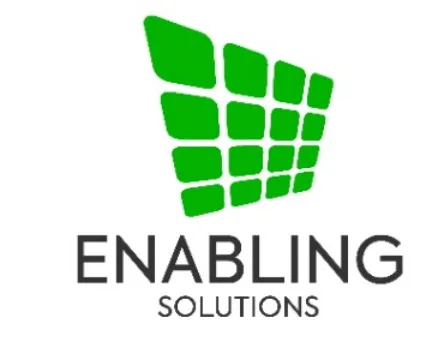Solar Industry Bright Future Era: As we approach 2023, Pakistan’s solar energy industry is poised for monumental growth that will transform the country. You have likely noticed the increasing number of solar panels popping up on rooftops in your neighborhood and community. This visible shift is just the beginning of a solar revolution that will reshape Pakistan’s energy landscape in the coming years. With electricity demand increasing by 8–10% each year in Pakistan and frequent power outages continuing to hamper economic activity, the need for a reliable and sustainable energy source is clear. Solar energy is uniquely positioned to meet this demand in an affordable, scalable way. Government initiatives, international investment, and declining costs have aligned to make solar more accessible and viable than ever before in Pakistan. The next few years will prove pivotal as solar transitions from a niche energy source to a primary driver of Pakistan’s economy. The future is bright for this burgeoning industry and for Pakistan’s renewable energy prospects overall. 2023 may well mark the turning point where solar becomes a dominant force for change.

The Solar Industry Hit by the Pandemic but Poised for Growth
The solar industry, like many others, has endured economic hardship during the COVID-19 pandemic. However, compared to other sectors, the solar industry has remained resilient. Experts predict the solar industry will rebound and experience substantial growth in 2023 and beyond. There are several reasons why the solar industry is poised for growth after the pandemic. First, the cost of solar panels and installation has declined steadily over the past decade, making solar energy more affordable and accessible. The International Agency anticipates a 43% increase in solar installations over pre-pandemic levels, producing over 920 gigawatts of energy capacity. Lower costs and increased adoption will drive industry growth. Second, concerns over climate change and environmental degradation have intensified. There is growing recognition that continued dependence on fossil fuels is unsustainable. Solar and other renewable energy sources offer a viable solution. Many governments and private companies have announced commitments to transitioning from fossil fuels to renewable energy sources like solar. These commitments will translate into increased investment and projects in the coming years. Finally, the solar industry has learned valuable lessons from the pandemic that will help fuel future growth. Supply chain disruptions negatively impacted the industry, but companies have adapted to build more resilient supply chains and business models. The industry is also innovating to provide products and services that are compatible with social distancing and remote work. These adaptations will allow the industry to better weather future economic downturns.
In summary, declining costs, environmental concerns, and industry adaptations have positioned the solar industry for robust growth in 2023 and beyond. While the pandemic temporarily slowed progress, the future remains bright for this vital industry. Overall, the solar industry’s future looks radiant. It will reduce taxes on Electricity Bills.
Decreasing Costs Making Solar More Affordable – Solar Industry Bright Future
The solar industry’s future looks bright, especially as costs continue to decrease substantially. By 2023, solar energy is poised to become significantly more affordable and accessible. The cost of solar panels, inverters, and other system components has declined steadily over the past decade. As technology improves and the manufacturing process becomes more efficient, the price of solar energy systems is projected to drop by up to 50–66% by 2030. This decrease in costs will make the adoption of solar energy more feasible and attractive for both residential and commercial users. When solar energy first emerged, the high upfront costs were a barrier for many interested in switching to this renewable and sustainable energy source. Now, as prices fall and financing options expand, solar energy is within reach for a growing number of people. The declining costs have also enabled the growth of new models like solar leasing and power purchase agreements (PPAs), where customers can access solar energy with little or no upfront costs. The declining costs of solar combined with rising electricity rates are making solar energy increasingly competitive with traditional energy sources like coal and natural gas. By some estimates, solar and wind energy are already cheaper than fossil fuels. As the costs of solar technology and installation continue to drop, solar energy is poised to become the most affordable energy option for many. The decreasing costs of solar panels and components are driving exceptional growth in the solar industry. As prices fall further, more people and businesses will be able to afford and benefit from this abundant, renewable energy source. The future is bright for solar as it becomes more mainstream and helps combat climate change through reduced emissions and a transition to sustainable energy. By 2023 and beyond, declining costs will make solar energy a very affordable and attractive choice for powering our homes, businesses, and communities. it may cause the solar industry bright future.
Advancements in Solar Technology: Improving Efficiency
The solar industry has progressed tremendously in recent years due to advancements in solar technology and manufacturing processes. Photovoltaic solar panels have become increasingly efficient and affordable. Modern panels can convert over 20% of the sun’s energy into electricity, a vast improvement over older panels, which were only 6–8% efficient.
According to solar market insight report 2023 as technology improves, the cost of solar power has declined substantially. The average price of solar panels has dropped by over 70% since 2010. Advancements in manufacturing techniques and automation have made production cheaper and faster. New solar cell designs like perovskite and tandem cells promise to further increase efficiency and decrease costs. Inverters, which convert the direct current (DC) from solar panels into usable alternating current (AC), have also become more advanced. Modern inverters can achieve over 99% efficiency. Power optimizers can maximize the energy harvested from solar panels. When connected to an inverter, power optimizers increase the overall efficiency of a solar system. Other innovations, like solar shingles, solar roads, and floating solar farms, make solar power more versatile and accessible. As solar technology progresses, renewable energy will continue to replace fossil fuels. By 2023, solar energy may become the cheapest source of new electricity in many markets. The future of solar is bright. Advancements in solar technology will drive growth in the industry and support the transition to clean energy. As solar panels become more efficient and affordable, more homes and businesses will adopt solar power. Investments in solar energy and storage will create new economic opportunities. With ongoing innovation, solar power has the potential to meet a significant portion of the world’s energy needs sustainably.

Reducing Reliance on Fossil Fuels and Helping the Environment
Solar Industry Bright Future Reliance on fossil fuels has been the norm for decades, but the environmental damage caused by their unrestrained use is no longer sustainable. As the threats of climate change loom large, transitioning to renewable energy sources like solar power is crucial for protecting our planet.
Decreasing Pollution
By reducing dependence on fossil fuels, solar industry bright future also helps curb pollution from greenhouse gas emissions and other byproducts that contaminate the air, water, and soil. According to the Union of Concerned Scientists, solar power generates little to no emissions or pollutants. In contrast, coal-fired power plants are one of the biggest sources of carbon dioxide emissions, a major contributor to global warming.
Sustainable Energy Source – Solar Industry Bright Future
Solar industry bright future as solar energy is a renewable resource, unlike fossil fuels, which are nonrenewable and depleting. The sun radiates an enormous amount of energy to the Earth, and we have only harnessed a fraction of its potential. As solar technology improves and costs decrease, solar power can meet more of the world’s energy needs sustainably and indefinitely.
Energy Security
By increasing the share of domestically produced solar energy, countries can gain greater energy security and independence. They reduce their reliance on imported fossil fuels and their vulnerability to geopolitical conflicts that can disrupt supply. Locally generated solar power also improves resilience against natural disasters or attacks on energy infrastructure.
Economic Benefits – Solar Industry Bright Future
The solar industry is creating many new jobs in manufacturing, installation, and other areas. It provides economic opportunities in both developed and developing nations. The costs of solar technologies continue to decline, and solar energy can help stabilize energy prices by reducing dependence on volatile fossil fuel prices. The environmental and economic rationale for transitioning from fossil fuels to solar energy is clear. By ramping up the adoption of solar power and other renewable sources, we can create a sustainable energy system that protects public health, the climate, and our natural resources for future generations. The solar industry bright future depends on bold actions today to accelerate the shift to clean, renewable energy worldwide.
The Forecast Is Sunny for Solar Expansion in 2023
The solar industry has weathered significant challenges in recent years, including supply chain disruptions and project delays caused by the COVID-19 pandemic. However, the solar industry bright future outlook for solar energy expansion in 2023 and beyond is bright. Reduced costs and improved efficiency of solar panels and related technologies will drive increased adoption. As silicon solar cells and inverters continue to decrease in price and increase in efficiency, the cost of residential and commercial solar installations will decline substantially. Industry experts predict solar costs could decrease by 50–66% by 2030. This cost reduction, combined with rising retail energy prices, will make solar power increasingly cost-competitive with fossil fuels.
Technological improvements will also accelerate solar adoption. Floating solar farms, solar roads, and electric vehicles integrated with solar energy are emerging innovations that will transform how we generate and use power. These advancements in solar technology will increase the viability and adoption of solar for both individuals and utility providers. Environmental concerns and a desire for energy independence are also propelling the growth of solar. As the impacts of climate change intensify, the need to transition from fossil fuels to renewable energy sources like solar has never been more urgent. Solar energy allows homeowners and businesses to generate their own power, reducing dependence on energy companies and providing a hedge against future increases in energy costs. The solar industry overcame immense difficulties in 2020 and has emerged poised for significant expansion. Solar industry bright future cost reductions, technological progress, environmental benefits, and energy independence are all powerful drivers that will fuel solar growth in 2023 and the coming decade. The solar industry bright future in Pakistan and around the world is exceptionally bright.

Conclusion – Solar Industry Bright Future
As you have learned, the solar industry bright future in Pakistan is poised for massive growth over the next few years. With favorable policies now in place, decreasing costs, and surging demand, solar will likely dominate the renewable energy landscape. By 2023, solar may well be the most affordable and practical option for both residential and commercial energy needs in Pakistan. The future is bright for this burgeoning industry. Within the next few years, you can expect solar to bring greater energy security, environmental benefits, and cost savings to communities across the country. The solar revolution is coming to Pakistan, and 2023 may just be the turning point that brings the dawn of a new energy era. The solar industry bright future, and the possibilities are endless. Pakistan’s solar success story has only just begun.





